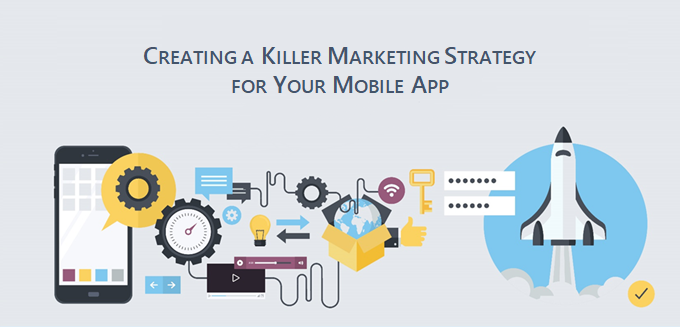Everything you need to know about mobile app marketing was discussed in the last webinar. Akhil Chandra, founder and CEO of Studio Mosaic, a mobile app studio, talked about the essentials of app marketing, right from pre-launch to post-launch activities, followed by app store optimization and app promotion. Those of you looking for insights on app marketing, this webinar would really help you get started. In case you missed it,
And here are some of the questions that followed:
Question 1
How to reach tier 3 audience, considering, people hardly have access to the internet or other media?

You need to first check if that market is really for you and if you are creating an app that will reach out to Tier 3 and Tier 4 audiences. If the answer is yes, then for you the challenge is very different.
- In the case of Tier 1 and Tier 2, you are getting an already engaged user who is well adept at using phone devices and online methods, and you just have to compete with the mindsets.
- But in the case of Tier 3 and Tier 4, it is also a question of getting them to make that leap in the technology hierarchy and start using apps or social media in the first place. So that would have a different challenge in itself and you’d have to use some kind of offline marketing methods to be able to reach out to them and explain the benefits of using that app. Moreover, your online app store marketing techniques will have limitations as it will not be able to reach out to Tier 3 ad Tier 4 level of demographics.
Question 2
How does one generate revenues from an average established app?
Before I answer that, I’d like to elaborate on the type of app we are talking about.

Category I:
In some cases, the app is only a distribution mechanism. A lot of bricks and mortar companies, which are now making apps for themselves, fall into this category. So for example, in an education learning company, the business app would help in reaching out to people and sharing those online lessons. So here, it would entirely depend on the quality of the content they are giving. It could largely be based on subscription or on membership fee.
Category II:
There is a second category of apps, where the app itself is the business. For example, WhatsApp or Facebook or Twitter. A lot of photo/ video apps fall into this category as well. Here, your revenue would emanate from the app itself. Now here, the options are a few, it could either be a paid app or you could have a freemium model.
In the case of a freemium model, essentially the app is free but you can unlock certain functionalities by paying – so it involves an in-app purchase. Freemium means that it’s a free app but if you have the option of unlocking more features by paying.
Category III:
The third category of apps comprises the subscription model. News app and music apps normally use the subscription method.
So revenue options would differ for apps, depending on the industry and category.
Sponsorship of apps is gaining popularity these days. For example, a big brand could be looking to sponsor an app by doing some kind of surrogate advertising. This involves the brand paying the app and money not being charged to consumers; like in the case of Runkeeper, which is a popular fitness app, sponsored by Nike.
These are some of the ways you can generate revenues from. Also, try advertising. Integrate the ad network and earn from advertising.
Question 3
Doesn’t Google Tag Manager work on apps?
Google Tag Manager does work on apps, but there’s a question of specialty. Google, essentially is known for the web. They also have a mobile tracking tool that tells you the mobile analytics. But Flurry and Localytics go one step further. There you can get all the same things that Google does.
Also, Google is more tuned to Android apps and they are fairly limiting to iOS apps. They like to promote their own products in every which way. Since Flurry and Localytics are third-party tools, you will not find any variation in the two platforms (Android and iOS).
Question 4
How can we measure the bounce rate of an app?
Bounce rate is a term which is commonly used for websites. In the case of apps, if would be the page from where you are exiting or shutting the app. Again, you can use tools like Flurry and Localytics to measure this. You can see where the people are leaving from and shutting the app.
[Certain marketing tools like LeadSquared will also give you these details (like which pages did they visit, how long they spent) for your mobile app, like in the case of Byju’s Classes.]

Question 5
In the webinar, you talked about reaching out to Apple while promoting or featuring the app after the release. What about Android?
Essentially, the concept would remain the same. Apple is more receptive to receiving such requests. Android also has apps for editors and there are certain things that they look at, in terms of compatibility. For example, if the app is device compatible.
They are also really big on you using other Google products. For instance, if you have an app using a Google Plus or Gmail login, that increases your chance of getting featured. So Google Plus might not be that popular but if you have that integrated within the app and if you are getting plus ones, then that’s a big thumbs-up. Your graphics again should be good. Those are some of the things Google would look at.
You can also connect with them directly. The team for India app store sits out of Gurgaon. You’ll find them on LinkedIn. Once you connect with them, share the link for your play store app, a media kit, icons, screenshots and possibly, the video. Send these details and highlight the functionalities.
Question 6
What’s a good app retention rate, specifically for finance and education apps?

This vastly differs depending on the category of the app. The retention rate should also be seen from the context of where the users are coming from. If they are generic users, then you can expect a higher retention rate but if you are getting a lot of paid downloads (incentive users – where you are giving an incentive for users to download the app), then you should expect a lower retention rate.
If for example, it’s a game, then even 10% is fantastic. If it’s a messaging app, then 40% is considered to be great. It varies somewhere between 10-40% depending on the category. On an average I would say, anything in the range from 25-35% would be good. Anything below 10% would be bad.
Typically, in a finance app, I would say something around 20% would be good. But if it’s like a bill receipt manager app where the engagement rates are higher, then even 25% or 35% can be expected. In your case, 30%-35% would be fantastic. Getting anything over 40 is extremely difficult. Most would hover around the 15-30% mark.
Online education app would be slightly on the lower side. Byju’s is among those which are doing well. 20% for an online education app would be good.
Question 7
What exactly are the parameters to measure the app success?
App success can be broadly measured in 2 ways – active users and total downloads. These are the two most important metrics that determine the success of the app. And evidently both should be high. Then there are other parameters that can be addressed which have a direct/indirect impact on the above two parameters, such as app store rank, retention rate, uninstallation rate, app store conversion rate, session views, session length, etc.
Visit our blog for more webinar recordings and marketing blog posts.







